Excuse My Dust (1920) and Sherlock, Jr. (1924)
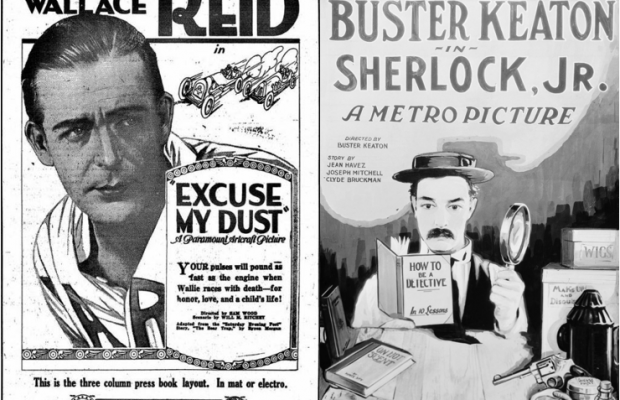
Toronto Film Society presented Excuse My Dust (1920) and Sherlock, Jr. (1924) on Monday, March 28, 1966 as part of the Season 18 Monday Evening Silent Film Series, Programme 5.
~~~~~~~~~~~~~~~~~~~~~~~~~~~~~~~~~~~~~~~~~~~~~~~~~~~~~~~~~~~~~~~~~~~~~~~~~~~~~
(Main Auditorium, UNITARIAN CHURCH, 175 St. Clair West)
IMPORTANT NOTICE
WE SINCERELY HOPE THAT NOBODY JOINED THIS YEAR’S SILENT SERIES SOLELY FOR THE PURPOSE OF SEEING IVOR NOVELLO. AT THE LAST MOMENT THE MUSEUM OF MODERN ART REPORTED THAT IT WAS UNABLE TO SEND US The Lodger, ALTHOUGH WE HAD BOOKED IT AS LONG AGO AS LAST JUNE. WE ARE STILL INVESTIGATING THE TRUE REASONS: BUT IN THE MEANTIME IT WAS NECESSARY TO RUSTLE UP A SUBSTITUTE. WE HOPE OUR CHOICE WILL PROVE ACCEPTABLE TO YOU.
Programme No. 5
Monday March 28, 1966
1915: Excerpt from Enoch Arden, with Lillian Gish & Wallace Reid
1920: Wallace Reid in Excuse My Dust
Intermission
1924: Buster Keaton in Sherlock, Jr.
~~~~~~~~~~~~~~~~~~~~~~~~~~~~~~~~~~~~~~~~~~~~~~~~~~~~~~~~~~~~~~~~~~~~~~~~~~~~~
Enoch Arden (excerpt only)
Released by the Mutal Film Corporation, 1915
Based on the poem by Alfred Tennyson
Directed by Christy Cabanné
Supervised by D.W. Griffith
Players: Lillian Gish (as Annie), Alfred Paget (as Enoch), Wallace Reid (as Philip), Mildred Harris
This excerpt was shown in the Silent Series two years ago, on the same program with Wallace Reid in The Dancin’ Fool. It made a very favorable impression at that time; but the reason we are showing it again so soon is simply because it comes automatically with Excuse My Dust as part of a package, so we might as well show it and get our money’s worth. (We’re also using the same musical score which we stitched together for that occasion from miscellaneous compositions by Mendelssohn).
The excerpt is approximately the second half of the film. For a modern generation unfamiliar with this once-popular narrative poem by Tennyson it may be necessary to fill in the first half. The story, first published in 1864, was set in an English seacoast village “a hundred years ago”, where “…three children of three houses, Annie Lee, the prettiest little damsel in the port, and Philip Ray, the miller’s only son, and Enoch Arden, a rough sailor’s lad made orphan by a winter’s shipwreck”, used to play together. As they grew older, both boys fell in love with Annie, but it was Enoch that Annie loved and married. But after a few years Enoch, in order to raise the money to support his family better, signed on as a boatswain on a China-bound merchant vessel, and left for what should have been a year’s absence. It was the last anyone heard from him; the ship never returned, and ultimately (as we see in the film) even Annie reluctantly presumed his death. In actual fact, however, he had escaped drowning, but was marooned on a tropical island for many years, like Robinson Crusoe. (The rest of the story is covered in our film excerpt).
* * *
Excuse My Dust
A Paramount-Artcraft Picture
Director: Sam Wood
Scenario: Will M. Ritchey
Founded on the Saturday Evening Post story “The Bear Trap” by Byron Morgan
Copyright: Famouse Players-Lasky Corp., January 19, 1920
In 5 Reels
Players: Wallace Reid, Ann Little, Theodore Roberts
Take note that this was never a super-special picture even in its own day. The following review, reprinted in its entirety from Photoplay Magazine for October, 1920, gives a contemporary estimation:
I liked Wallace Reid’s Excuse My Dust, first, because it is a good short story, attractively screened, and second, because its creators have not tried to make it anything more than that. One of the eleven or fourteen things we all find to object to in pictures is the obvious effort of scenariosit (SIC) and director, the one usually abetting the other, to build a mansion out of the material laid down for a bungalow. When the thing is finished the foundation is fairly solid, but the superstructure is so very wabbly and thus you can plainly see through it.
Excuse My Dust relates a plausible and interesting incident in the life of “Toodles” Walden, erstwhile demon driver of the good old Darco bus that won the Los Angeles-San Francisco road race in Speed Up.
No sex stuff here, and no suave young villain. Just a good, interesting, at times exciting, and always well told short story. The ingratiating Wallace Reid is as cheering a screen hero as usual, Theodore Roberts is excellent as the blustering “j.D.”, and Ann Little is a lovable wife.
In 1920, when this film was made, Wallace Reid was rated in a popularity contest as the top male star–ahead of Charles Ray, Thomas Meighan, Eugene O’Brien, Douglas Fairbanks and William S. Hart (in that order). He was 28 years old, having been born March 15, 1892.
His birthplace was St Louis, Missouri, but the family subsequently moved to New York. His father, Hal Reid, was a successful actor, director and playwright, and the family lived very comfortably in a Manhattan apartment in the winter and a country estate in New Jersey in the summer. Wallace’s was never an underprivileged childhood.
In 1911 he got a job in the Viagraph film studios in New York, where his father was already working as both actor and writer, and for the next four years he worked steadily in films–mostly as an actor, of course, though at first he did other jobs as well, including playing the violin. (The playing of “mood music” on the set during filming, as an emotional assistance to the actors, was a practice that was abandoned only with the coming of talkies).
A bit part as a blacksmith in The Birth of a Nation (1915) brought him to the attention of Jesse Lasky and Cecil B. DeMille, who quickly snapped him up for their own company (soon to be amalgamated with Zukor’s Famous Players Corp). DeMille cast him as Don José in Geraldine Farrar’s debut film, Carmen, which was a popular success; and he was Farrar’s leading man in all but one of her six Lasky films. By 1918 he was a star in his own right, and by 1920 he was the company’s greatest asset. He was the ideal American youth–clean-cut, cheerful, easygoing; admired by men, loved by women, and adored by old ladies and small boys alike.
Jesse Lasky, in his biography “I Blow My Own Horn”, says:
Wallace Reid was the easiest actor to cast and work with in the whole of my experience. He had a terrific vogue in automobile-racing pictures–the audiences couldn’t get enough of him behind a steering wheel. We virtually turned these road-racing items out on an assembly line and every one was a money-maker. But that didn’t type Wally. He was believable in almost every role we gave him. However, he wasn’t believable as a heavyweight fighter in The World’s Champion, taken from a Broadway play. He was rapidly losing weight and couldn’t stand on his feet for more than a short time. He made a valiant struggle to get through his scenes, but it was obvious that something was wrong. Then Zukor wrote me that the whole country was teeming with a rumor that Wallace Reid was taking dope, and that if it was true we were sitting on a powder keg. Will Hays called me long-distance and told me I would have to do something about it.
Lasky sent for Reid and questioned him; Reid denied the charge, and cheerfully agreed to a thorough medical examination. A young doctor was assigned to live with him for two weeks, never letting him out of his sight. At the end of this time the doctor reported to Lasky: “To the best of my knowledge, Wallace Reid is not using narcotics. I’ve eaten my meals with him, slept in the same room with him, followed him to the bathroom, played golf with him, searched his belongings. He’s co-operated wonderfully. I don’t know anyone else I could live with like Siamese twins for two weeks without wanting to murder, but he is unquestionably the nicest chap I’ve ever known”.
I breathed a premature sigh of relief and notified Hays and Zukor that there was nothing to worry about–the doctor had given Wally a clean bill of health.
A few weeks later Reid was taken to the Banksia Place Sanitarium, his health so undermined that he never recovered. Will Hays and I visited him there just before he died in 1923, only thirty years old.
There was no question of the doctor’s integrity. Either he fell under the spell of the magnetic personality that exerted its effect on the whole country, and unwittingly slackened his surveillance with the conviction that it wasn’t necessary, or else Wally was fighting a battle alone to salvage his reputation at any cost, and actually kicked his habit by his own will power–too late. It was established later that he did not contract the addiction as a thrill seeker. It started from being given narcotic injections to relieve distracting headaches that resulted for a head injury in a train wreck.
Kenneth Anger, in his slanderous book “Hollywood Babylon, sets forth as “fact” all the contemporary rumors, and declares that Reid was indeed given to wild parties and “thrill seeking”‘ but this, though possible, is inconsistent with Reid’s character as described by those who knew him. As for Anger’s nightmarish description of Reid’s being spirited off to a padded cell in a private sanitarium while in a drug-induced sleep because his bosses wanted to brush him out of sight when the scandal broke, this is just oo much. Truth can be sensational; but the sensational is not automatically the truth. (Ugly and completely unfounded stories as the “true” cause of Valentino’s death were still in underground circulation over fifteen years later). There is no reason to doubt Lasky’s account, nor Cecil DeMille’s report in his autobiography:
The public never knew the heroic efforts he made to break himself of the addiction. The public is quick to judge; but I prefer to remember the brave determination in what Wallace Reid said to me just before he entered the sanitarium where he died: “I’ll either come out cured or I won’t come out”.
Reid died January 18, 1923. When he went into the sanitarium, just before Christmas 1922, his family openly revealed his plight, hoping that publicizing it might serve as a timely warning to prospective victims of the drug habit; and after his death his wife, a former actress named Dorothy Davenport, made a successful film called Human Wreckage, with the avowed purpose of alerting the public to the drug evils.
Although his death was not due directly to the drugs themselves but to his struggle to break the habit, the public that had idolized Wallace Reid as the epitome of clean-cut American youth was shocked by the revelation that he was a “dope fiend”. Like Valentino four years later (and at practically the same age), Wallace Reid died at the height of his popularity; but whereas Valentino’s sudden death had a romantic beauty about it that immortalized his legend, Reid’s death was clouded in sordid scandal and shattered illusions, and was thus the more tragic.
A WALLACE REID “filmography”
(WARNING: This list comes from an Italian encyclopedia of films; but the errors and omissions that we were able to correct may very well not be the only ones!)
1911: Leather Stocking Tales (Larry Trimble); The Deerslayer (with Florence Turner & Hal Reid); The Leading Lady (with John Bunny)
1912: Chumps (with Leah Baird & John Bunny)
1913: The Heart of a Cracksman (with Cleo Madison)
1914: The Intruder (with Dorothy Davenport); Retribution (with Dorothy Davenport); The Test (Tom Santschi; with Frank Lloyd & Dorothy Davenport)
1915: The Birth of a Nation; Enoch Arden; Old Heidelberg (John Emerson; with Dorothy Gish); The Chorus Lady (with Cleo Ridgely); Carmen (Cecil DeMille; with Geraldine Farrar); The Golden Chance (DeMille)
1916: To Have and to Hold (with Mae Murray); The Love Mask (with Cleo Ridgely & Earle Fox); Maria Rosa (DeMille; with Geraldine Farrar); The Yellow Pawn (George Medford; with Cleo Ridgely); Joan the Woman (DeMille; with Farrar)
1917: The Big Timber (Wm Desmond Taylor, with Kathlyn Williams); The Hostage (Robert Thronby); The Woman God Forgot (DeMille; with Garrar); The Devil Stone (DeMille; with Farrar)
1918: The House of Silence (Donald Crisp); Believe Me, Xantippe (Crisp); The Firefly of France (Crisp); Less Than Kin (DeMile, with Ann Little); Too Many Millions (James Cruze)
1919: Alias Mike Moran (Cruze); The Roaring Road (Cruze); The Love Burglar (Cruze); The VAlley of the Giants (Cruze); The Lottery Man (with Sylvia Ashton & Harrison Ford)
1920: Double Speed (Sam Wood; with Wanda Hawley): Excuse My Dust (Wood); The Dancin’ Fool (Wood; with Bebe Daniels); Sick Abed (Wood; with Bebe Daniels); What’s Your Hurry? (Wood)
1921: The Love Special (Frank Urson); Too Much Speed (Urson); The Hell Diggers (Urson); The Affairs of Anatol (DeMille; with Swanson, Daniels & Hawley); Don’t Tell Everything (Wood; with Swanson & Dorothy Cumming); Forever (George Fitzmaurice; with Elsie Ferguson and Dolores Cassinelli)
1922: Rent Free; The World’s Champion (Phil Rosen); Across the Continent (Rosen); The Dictator (Cruze; with Lila Lee); Nice People (Wm DeMille; with Bebe Daniels & Conrad Nagel); The Ghost Breaker (Alfred E. Green); Clarence (Wm DeMille; with May McAvoy & Agnes Ayres); Thirty Days (Cruze)
* * *
Sherlock, Jr
Presented by Joseph M. Schenck
Directed by Buster Keaton
Story by Jean Havez, Joe Mitchell and Clyde Bruckman
Photography by Elgin Lessley and Byron Houck
Art Director: Fred Gabourie
Electrician: Denver Harmon
Distributed by Metro Pictures Corporation
Copyright: Joseph M. Schenck: April 22, 1924
In 5 Reels
Players: Buster Keaton, Kathryn McGuire, Joseph Keaton
This film was made just prior to The Navigator, in the same year, and it will be noticed that the credits are virtually identical. (Joe Keaton, who plays the heroine’s father, is of course Buster’s own father).
A biographical article on Buster Keaton can be found in your program notes for our showing of The Navigator on January 10, 1966. It is with a heavy heart that we add the necessary postscript to bring it up to date: Buster Keaton died on February 1, 1966, of lung cancer.
Although we apologize to those who had their hearts set on seeing The Lodger, we don’t apologize to those we saw Sherlock Jr when it was shown in the TFS Main Series only about three years ago,–for like all of Keaton’s vintage films it can be viewed with pleasure over and over again.
But if you have not seen the film before, we suggest that you save the following notes till afterwards. Sherlock Jr needs no explanatory notes for its full enjoyment, and the following scraps of inside information are of interest only to those who are already familiar with the film, and may even prove a handicap to those who are seeing it for the first time.
(1) Buster Keaton rarely used a double for any of his stunts. But there is one shot in this film where he does use a double. Do you remember the scene where he is riding on the handlebars of a motorcycle driven by a policeman, and when they go over a bump the policeman falls off? In this scene the part of Keaton was played by his assistant prop man, Ernie Rossetti. This was rendered necessary by the fact that Keaton himself was doubling as the policeman–the regular actor not feeling up to deliberately falling off a speeding motorcycle.
(2) Keaton broke his neck during the making of this film, though this wasn’t discovered until years later, long after it had healed. It occurred in the scene where he is running along the top of a freight train. He grabs the rope of a water tower, which pulls the pipe down and drenches him; but he hadn’t reckoned on the strength of the water pressure, which tore his grip loose and flung him to the ground, where he landed with his head right across the rail, with the rail itself right on his neck.
(3) In an interview published in Film Quarterly (Fall 1958) Keaton has described how they did the dream sequence in which he walks into the movie screen: “We built what looked like a motion picture screen and actually built a stage into that frame but lit it in such a way that it looked like a motion picture being projected on a screen. But it was real actors and the lighting effect gave us the illusion, so I could go out of semi-darkness into that well-lit screen right from the front row of the theatre right into the picture. Then when it came to the scene changing on me when I got up there, that was a case of timing and on every one of those things we would measure the distance to the fraction of an inch from the camera to where I was standing, also with a surveying outfit to get the exact height and angle so that there wouldn’t be a fraction of an inch missing on me, and then we changed the setting to what we wanted it to be and I got back into that same spot and it overlapped the action to get the effect of the scene changing”.
(4) In preparing the musical score to accompany this film, we took advantage of the fact that people nowadays tend to believe that all silent films were accompanied by a piano only; and accordingly we used a piano solo to represent the music being played in the movie theatre. This was done deliberately so that you could differentiate between our music accompanying Sherlock Jr and the music accompanying the movie-within-a-movie “Hearts and Pearls”. But this is a falsification of the facts of life in 1924, as faithfully reflected in the film. If you look carefully you will see that the music in the theatre is being played not just by a pianist but by a small orchestra.
Notes by Fraser Macdonald

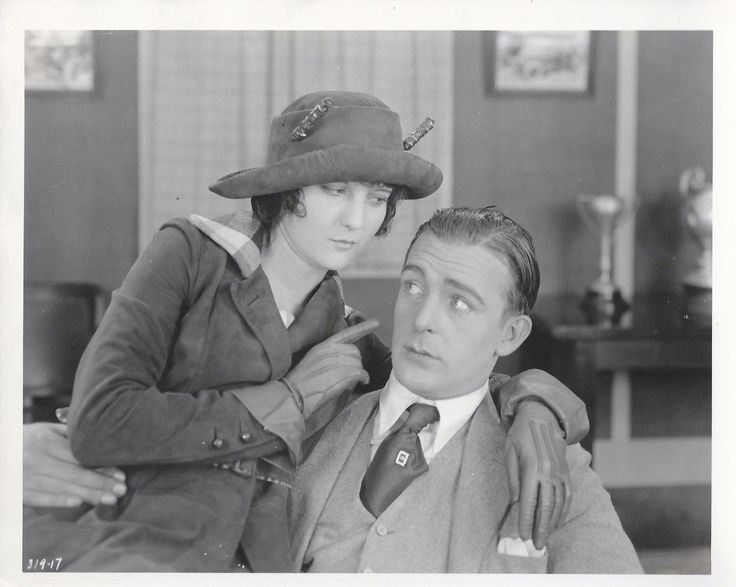
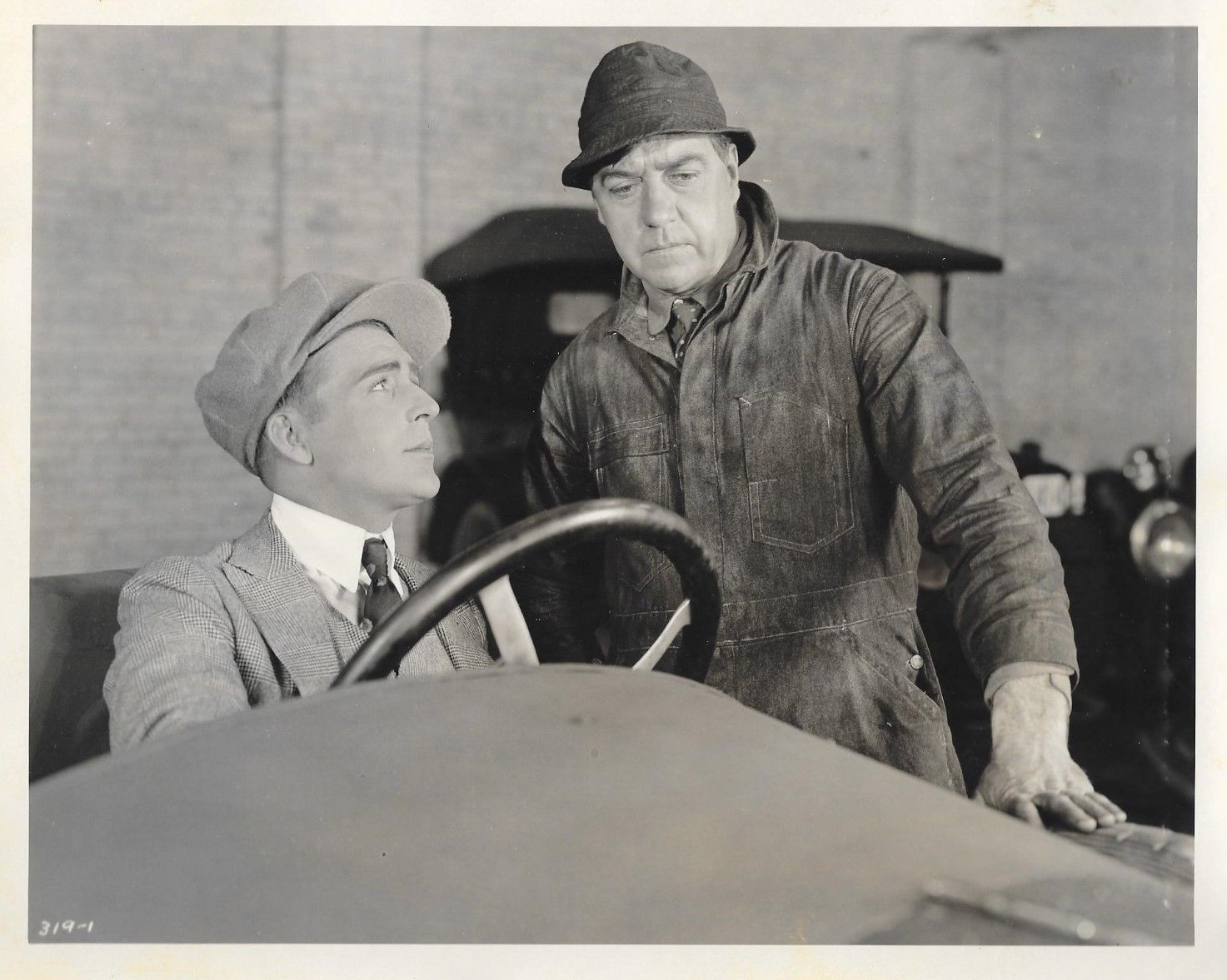
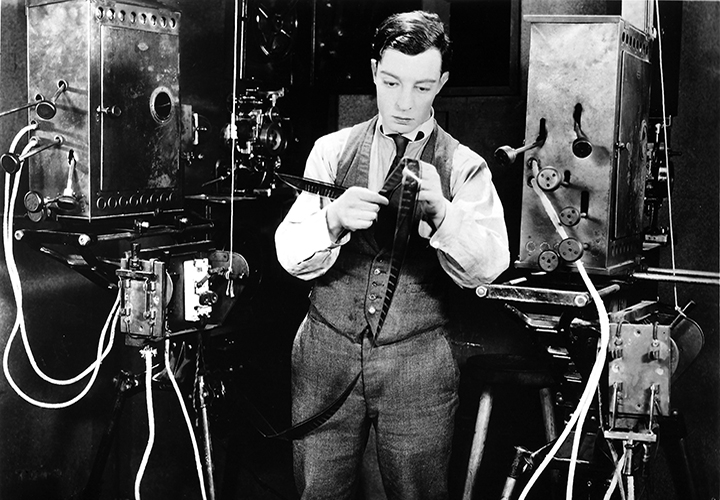
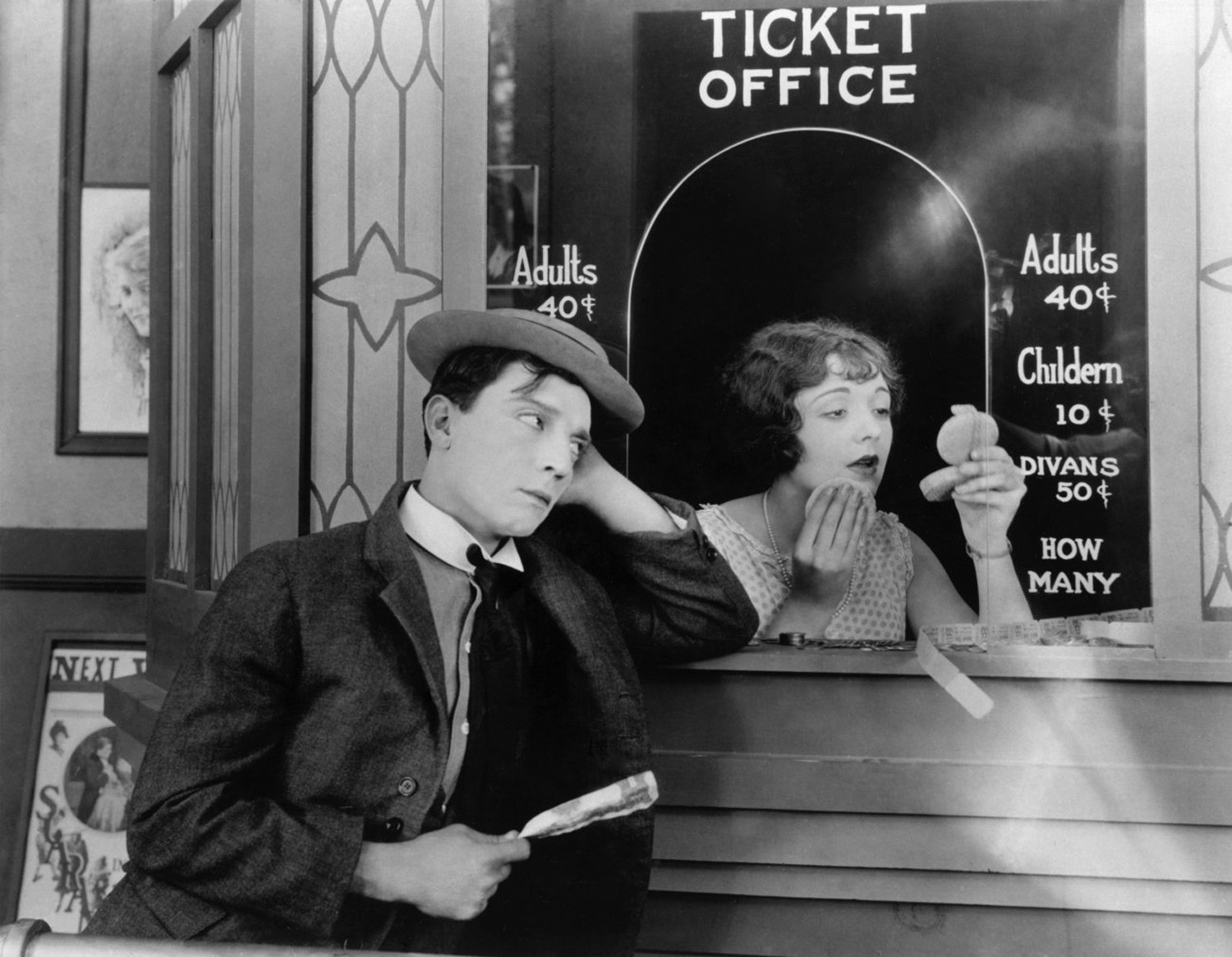
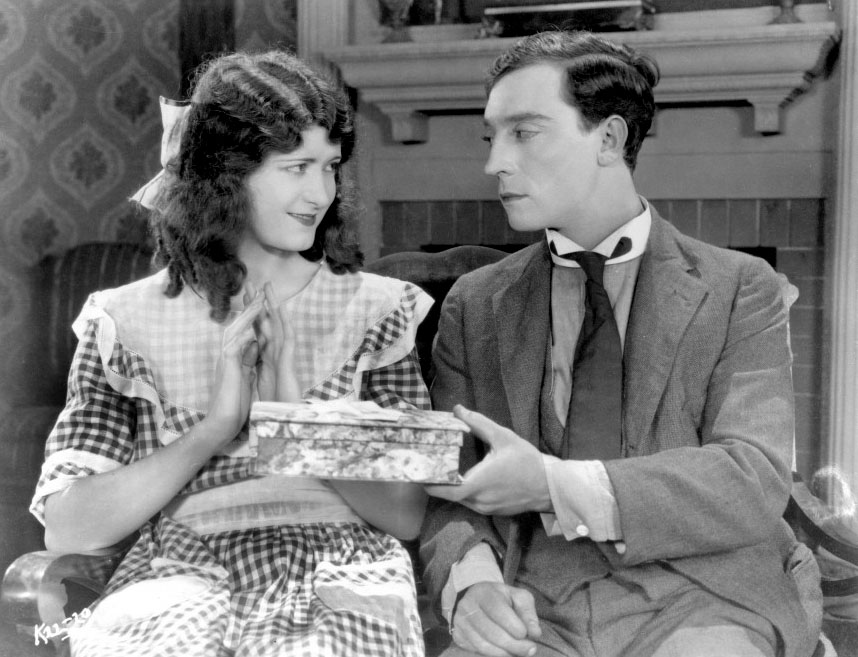
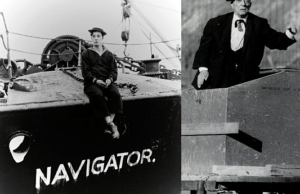
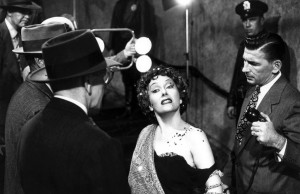
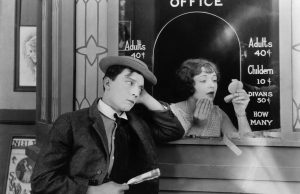






Leave a Reply